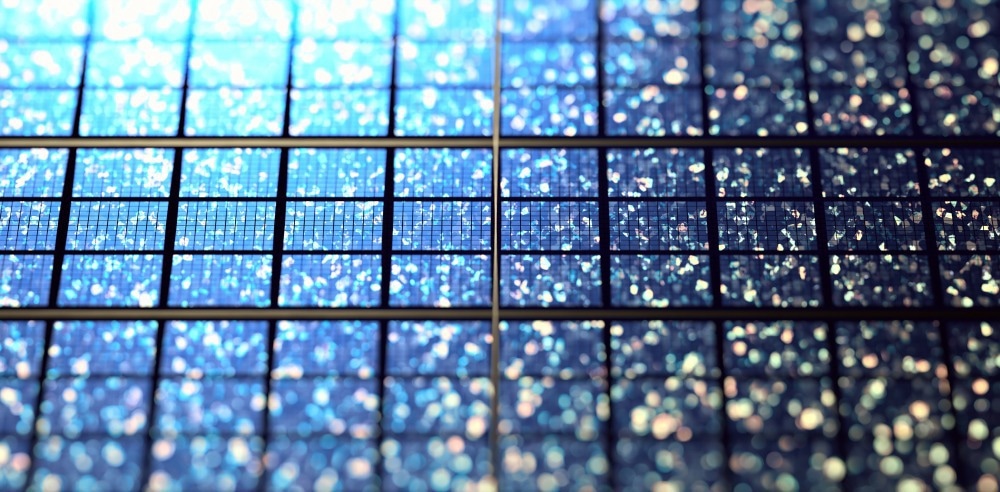Nanoparticle solar cells offer the unique ability to transform sunlight into electrical energy with decreased material usage, shortened deposition periods, and enhanced carrier collection in defective absorbing materials.

Study: Design and analysis of multi-layer silicon nanoparticle solar cells. Image Credit: plotplot/Shutterstock.com
A study published in the journal Scientific Reports explored the possibility of using silicon (Si) nanoparticle solar cells as a light capturing absorber in ultrathin photovoltaics.
Advantages of Nanoparticle Solar Cells
Nanoparticle solar cells are ultrathin photovoltaic structures having a tenfold reduction in absorber thickness compared to traditional solar cells.
Ultrathin cells are likely to offer several advantages. When using rare elements, minimizing material usage is a straightforward way of increasing cost savings.
The reduced deposition durations attributed to ultrathin layers effectively result in higher industrial manufacturing volume and lower costs. Moreover, the open-circuit voltage rises with decreasing thickness of the absorbing material.
Ultrathin photovoltaics have seen increasing advancements and have been employed in spacecraft because of their small carrier diffusion lengths, which provide resistance against damage from radiation. Additionally, their flexible nature makes them excellent energy sources for portable gadgets.
Optical and Electrical Aspects of Nanoparticle Solar Cells
Designing nanoparticle solar cells requires a focus on the optical as well as electrical aspects of nanoparticle solar cells.
Concerning the optical aspect, a cell's absorbing behavior is the fundamental characteristic that defines how effective a cell design is at generating a greater photocurrent.
Optimizing the bandgap of cell absorbers and employing carrier transport equations to evaluate photo-carrier generation, diffusion, drift, and recombination are important electrical aspects.
The most significant disadvantage of ultrathin photovoltaics is a lack of adequate light absorption. Therefore, researchers often focus on developing light managing designs with practical applications.
Benefits of Using Nanoparticles
Etching a pattern on ultrathin photovoltaic structures could contradict the fundamental advantages of these ultrathin cells and make their conception much more challenging. Therefore, basic cell layouts with adequate efficiencies are often preferable.
Incorporating non-uniform rough surfaces has shown encouraging results among several strategies for increasing short circuit current in ultrathin photovoltaics.
The favorable impact of nanoparticles on enhancing absorption and widening the solar spectrum band for ever-smaller photovoltaic cells has recently come into focus. Unlike photonic crystal patterning, nanoparticles may be produced and coated using less expensive processes.
Inexpensive silicon-based nanoparticle solar cells, as compared to GaAs solar cells, have better commercial prospects of being used in a multitude of terrestrial applications with minimal energy needs.
What Did the Researchers Do?
The team illustrated a promising photon management method for ultrathin photovoltaics using multi-layer silicon nanoparticle solar cells.
They demonstrated the ability of the naturally textured design to segregate and transmit photo-generated carriers and absorb light.
The team evaluated the optical characteristics of structures formed by the Mie scatterers against planar cells having a similar thickness. They presented a complete assessment of cell behavior for a varying number of layers when subjected to oblique incidence and for different particle periodicities.
Several situations were studied for tailoring Si nanoparticles as the active element of a nanoparticle solar cell. Afterward, a suitable architecture was selected, and its electrical and geometric properties were optimized.
To enhance absorption even further, the researchers studied the impact of spreading silica nanoparticles on the cell front.
Findings of the Study
In this research, multi-layer silicon nanoparticles with submicron sizes were proposed as the absorbing elements in a nanoparticle solar cell.
The researchers performed a parametric study to investigate the absorbing performance of the group of Mie scatterers and discovered that the absorbing performance of the nanoparticle solar cell was greater with fewer layers and approached the absorbing performance of a flat Si layer with more layers.
In a concentrated population of silicon nanoparticles, periodicity had no effect on improving the absorption of the nanoparticle solar cell. To modify the Si nanoparticles into a p-n junction, multiple designs were developed.
The team analyzed the electrical performance of different case studies and concluded that potential efficiency could reach around 11%, which represented a promising result, considering the ultrathin nature of the nanoparticle solar cells.
This study also demonstrated that adding silica nanoparticles having appropriate dimensions on top of the cell face may increase photocurrent by about 10%.
Reference
Mirnaziry, S., Shameli, M., & Yousefi, L. (2022). Design and analysis of multi-layer silicon nanoparticle solar cells. Scientific Reports, 12. Available at: https://www.nature.com/articles/s41598-022-17677-z
Disclaimer: The views expressed here are those of the author expressed in their private capacity and do not necessarily represent the views of AZoM.com Limited T/A AZoNetwork the owner and operator of this website. This disclaimer forms part of the Terms and conditions of use of this website.